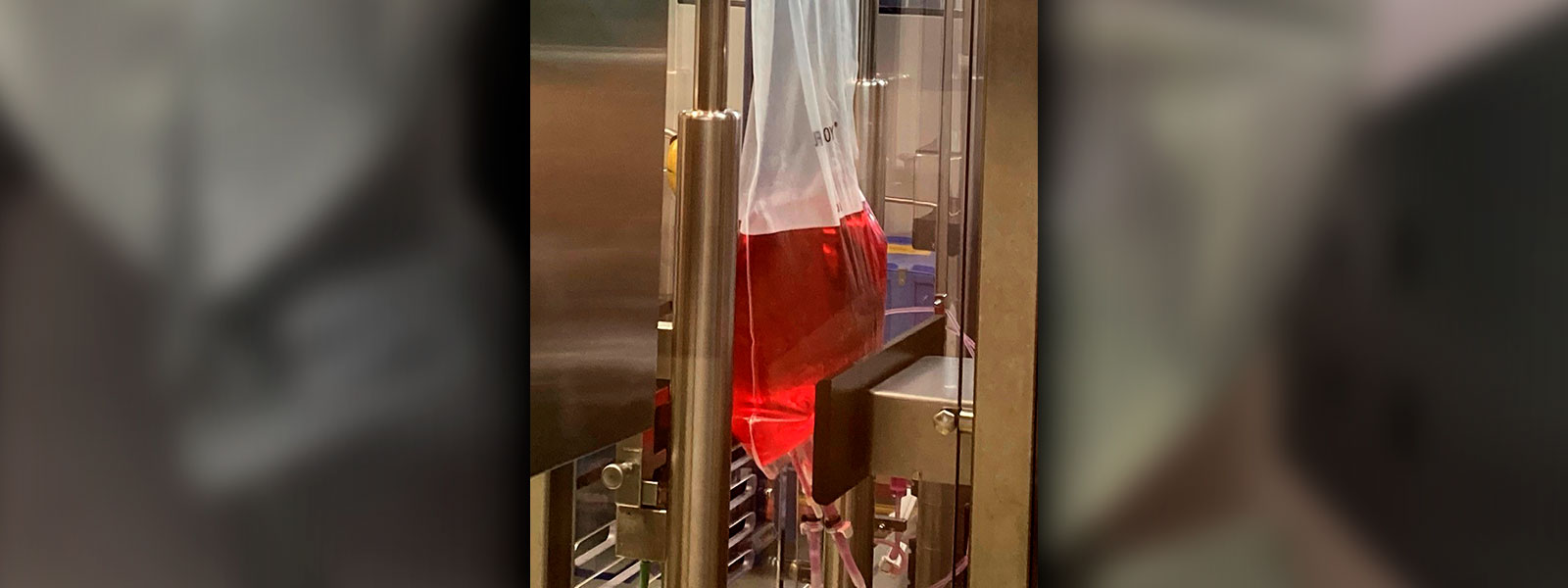"The clapometer"
An instrument for agitating control red blood cells
Technical file
Type of innovation: Procedure; Device
Scope: Bioengineering
Innovation leader: Grifols i Lucas, Víctor
Year: 2004
Period: From 2003
Geographical scope: Spain
Economic impact: Medium
Level of innovation: Evolutionary
Patent: No
Interdisciplinary connections: -
"The clapometer", a device invented by Víctor Grifols i Lucas, provides a highly effective means of agitating solutions using paddles that imitate the action of hands clapping, hence the name.
Precision filling and sedimentation
"The clapometer" was originally developed in an attempt to resolve problems that arose at two critical points in the process of filling immunohematology gel cards:
- the lack of precision when filling the wells using peristaltic pumps
- sedimentation of solid matter in the gel suspension during the agitation phase.
To solve the precision issue, Víctor Grifols invented a new type of pump, christened the “worm pump”. This used a horizontal tube to apply pressure to dispense the gel. Although it was more precise than its predecessors, it fell into disuse and the use of ceramic pumps became standard.
However, the problem of particle sedimentation proved harder to solve, for two reasons: because the gel had to be agitated very vigorously to maintain it in suspension; and because, depending both on the form of agitation and the plastic bags used, the gel solidified on the walls of the bag, as a result of which the proportion of the solution changed and it ceased to be homogeneous.
To address this problem, Víctor Grifols and his team dedicated a considerable amount of time to the development of a solution which involved using a partially filled flexible PVC bag to hold the gel solution, and applying gentle lateral pressure to both sides of the bag. This helped to maintain the mixture at a more consistent proportion than was the case with other methods. Unfortunately, some of the gel particles stuck to the walls of the bag as it was emptied, and no solution could be found to this problem.

A failed idea that opened the way to another solution
Despite the failure of the agitation technique that had originally been developed to solve the problem of filling the wells of gel cards, it transpired that this system could be used to fill vials with reagent red blood cells – red blood cells diluted to 0.8% – where a similar problem had been encountered. Prior to this, a magnetic agitation system had been used. However, this involved high-speed rotation, which damaged the red blood cells. This method was replaced by one in which agitation was performed using horizontal bags, a method that addressed the problem of agitation but did not offer a solution to the challenge of precise filling.
It was at this point that the idea originally developed by Victor Grifols i Lucas for use in filling gel cards turned out to be applicable to red blood cells. The R&D team and the Diagnostic process improvement team worked with Grifols Engineering to design a specific device, "the clapometer", to apply the innovative technique to the process of manufacturing and dosing reagent red blood cells, based on the use of paddles to agitate the solution and ensure that it remained homogeneous, using a gentle motion that was sufficiently vigorous to perform the task at hand without damaging the red blood cells. What was more, the new device was able to dispense precise quantities of the solution, something that the horizontal system had not permitted.
“Despite the failure of the agitation technique that had originally been developed to solve the problem of filling the wells of gel cards, it transpired that this system could be used to fill vials with reagent red blood cells – red blood cells diluted to 0.8% – where a similar problem had been encountered.”